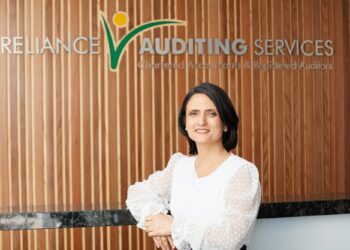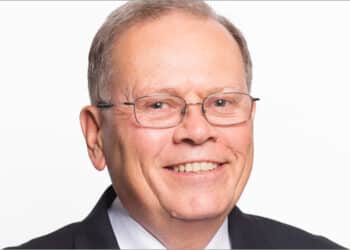In a recent online article, SuperConcepts executive manager, SMSF technical and private wealth, Graeme Colley said the lead-up to 30 June is a good time to look at how the super rules can work in favour of clients.
Mr Colley said there were a couple of changes this financial year with the continuation of the 50 per cent reduction in the minimum drawdown rate for account-based pensions and the indexation of the contribution caps.
SMSF professionals also need to take into account the changes coming into play from 1 July when helping clients plan.
“If you are between 67 and 75 and you are under your total super balance cap, you may have the opportunity to make non-concessional contributions without having to meet a work test,” he said.
“Good planning now may reap the rewards over the oncoming years.”
Contributions
Mr Colley explained that while salary sacrificing contributions are usually worked out with an employer at the start of a financial year, with personal tax deductions now available for super contributions, clients can top up their concessional contributions from personal savings if the amount they have salary sacrificed falls short.
Following the indexation of the contribution caps this financial year, Mr Colley said the standard concessional contribution is $27,500 for the 2021-22 financial year.
However, where clients have a total superannuation balance of less than $500,000 on 30 June 2021, they may be able to access a higher concessional contribution cap where they have any unused concessional contribution amounts dating back to 1 July 2018.
A standard cap of $110,000 applies to non-concessional contributions if the client has a total superannuation balance of no more than $1.7 million.
For anyone under 67 on 1 July 2021, Mr Colley said it is possible to access the bring-forward rule.
“This allows you to bring forward up to the next two years non-concessional contributions. The bring-forward rule applies if your total super balance was no more than $1.59 million,” he stated.
“If it is between $1.48 million and $1.59 million, then you may qualify to bring forward up to one year’s standard cap, and if you have a total super balance of no more than $1.48 million, then you may qualify to bring forward up to two year’s standard cap.”
Downsizer contributions
Mr Colley said downsizer contributions has been a popular strategy since the measure commenced in July 2018. Under the rules, anyone older than 65 can make a non-concessional contribution of up to $300,000 after selling their main residence.
“From 1 July 2022, the qualifying age will be lowered to 60,” he added.
Spouse contributions
Spouse contributions can be a critical addition to the superannuation savings of a client’s spouse, explained Mr Colley.
“As spouse contributions are treated as non-concessional contributions and not tax-deductible, they are counted against your spouse’s non-concessional contributions cap,” he noted.
“However, suppose your spouse qualifies as a low-income earning spouse, with an adjusted taxable income of less than $37,000. In that case, it is possible for the spouse’s contribution to qualify for a tax offset for you as the contributing spouse. If you make a spouse contribution of at least $3,000 then you can qualify for a tax offset of up to $540.”
After retirement contributions
Mr Colley also reminded SMSF professionals that there is a special concession for contributions that applies to someone between 67 and 75 years of age in the year after they have ceased working.
“If you have a total super balance of no more than $300,000 on 30 June in the previous financial year, you can be entitled to make concessional and non-concessional contributions to super without the need to meet the work test this financial year,” he explained.
“With the abolition of the work test for non-concessional contributions from 1 July 2022 this rule will only apply to someone who wishes to claim a tax deduction for personal concessional contributions in the year after they have ceased working.”
Co-contributions and low-income superannuation tax offset (LISTO)
Where an individual has made non-concessional contributions of at least $1,000 to superannuation, they may qualify for the government co-contribution of up to $500, said Mr Colley.
“To qualify, you must be under age 71, have an adjusted income of less than $57,016 in the 2021/22 financial year and be employed or self-employed.
“If you are eligible for the co-contribution, the payment will be automatically paid to your super fund by the ATO once you have lodged your tax return for the financial year,” he said.
The low-income superannuation tax offset (LISTO) of up to $500, he said, depends on the amount of tax-deductible contribution made to super, and your adjusted taxable income is no more than $37,000.
“Just like the co-contribution, if you qualify, the ATO automatically pays the amount to your super fund,” he said.
CGT small-business retirement exemption
Small-business owners with net assets of no more than $6 million or a business turnover of no more than $2 million may qualify for certain CGT small-business retirement concessions on the disposal of the business or certain business assets, said Mr Colley.
The current CGT threshold amount is $1,615,000 for the 2021-22 financial year.
“There is generally no work test for amounts that qualify under the small business retirement exemption rolled over to super for anyone under age 67. However, once you reach 67, work tests currently apply for the fund to accept the qualifying amount,” he said.
“From 1 July 2022, the work test is to be abolished; however, it is not possible to make CGT small business retirement amounts after you reach 75.”
Starting an income stream before 30 June
Individuals age 58 or older are able to commence an income stream from 1 June in any year, said Mr Colley.
“There is no requirement to receive an income stream payment in June of the financial year in which the pension commences. This allows you to delay receipt of the income stream commenced in June 2022 until the end of June 2023,” he explained.
“If you commence a pension on 1 June 2021 and reach 60 in the next financial year, any pension received after reaching 60 years of age will be tax-free.”
Paying the minimum pension
It is critical that SMSF clients ensure they have withdrawn at least the minimum amount of account-based pension or transition to retirement income stream from their fund.
“For the 2021/22 financial year, the minimum pension percentage has been reduced by 50 per cent,” he reminded SMSF professionals and trustees.
The underpayment of pensions and income streams, he warned, can lead to a number of compliance issues.
“This time of year is good to see whether you will withdraw at least the minimum pension amount from your SMSF by 30 June 2022,” he said.
“This will ensure that the income earned by the fund on any investments supporting the pension will be tax-free and not taxed at 15 per cent.”


